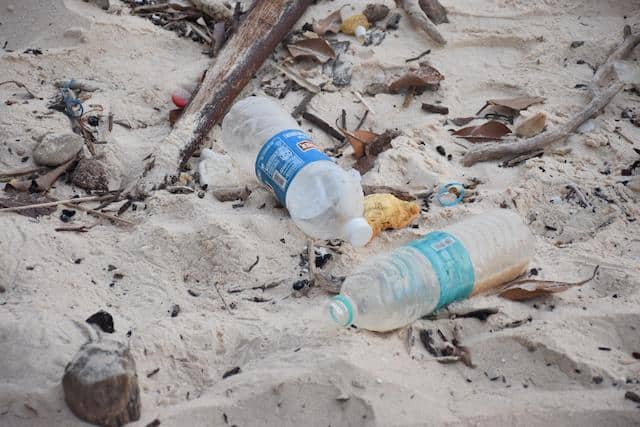Plastic ingestion of even a few pieces wreak havoc on Seabirds that ingest any amount of plastic and suffer from serious health troubles, a new study has disclosed. This new study focused on the non-lethal impacts of plastic on living creatures in comparison to previous studies which only emphasized on mortality to find the effects of plastic on marine life.
The health issues identified in the young birds in the study include high cholesterol levels and damaged kidney function in addition to reduced body mass, and head, wing, and bill length.
Jennifer Lavers, the lead author of the study in Environmental Science & Technology finding the non-lethal impacts of plastic ingestion and attached to the Institute for Marine and Antarctic Studies at the University of Tasmania in Australia, says, “A seabird might look fine but it can’t tell you it’s unwell or suffering.”
“We decided to treat them like humans and do a blood panel to find out how they’re doing,” Lavers says in an interview.
The fact is that seabirds are declining faster compared to any other group of birds as they are not keeping well in general, and plastics in the oceans are believed to be a reason.
“Seabirds are the canary in the coal mine for the health of oceans. We should be paying close attention,” Jennifer says.
Many years have been spent by Lavers and her colleagues at the largest breeding colony of flesh-footed shearwaters (Ardenna carneipes) to study the impacts of plastics on their health. The colony is located on remote Lord Howe Island, 375 miles off the eastern coast of Australia. It is a medium-sized seabird with pale, pinkish feet that breeds in southern Australia and northern New Zealand, and recently their population has reduced by 29 percent.
The shearwaters are only on land to breed and raise young like most of the seabirds. The adults hunt fish and squid at night and feed the waiting chicks. As 8 to 9 million tons of plastic debris added every year to contaminate the ocean increasingly, the adults mistakenly feed their young with plastic bottle tops and other plastic fragments. Some years minimum one piece of plastic were found in the stomachs of the 90 percent of shearwater fledglings.
Toxic Repast
According to the study, plastic is inherently toxic and becomes increasingly hazardous as the surrounding marine environment helps it to accumulate pollutants over time. The absorbed toxins leach into the bloodstream after ingesting the plastic, Lavers says. While a chick will not survive after ingesting 200 pieces of plastic, researchers wanted to know the impacts on health from ingesting a few pieces.
“Not many seabirds have stomachs stuffed with plastic; it’s usually more like four or five pieces,” she says.
A safe, non-invasive technique was applied to empty the stomachs of the chicks for assessment of their contents. A blood panel was done by taking blood samples to count RBC and WBC, measure cholesterol, calcium, uric acid levels, and other indicators of overall health.
There were reduced body mass, wing length, and also shorter head and bill length in the chicks with plastic. A single piece of plastic could cause higher cholesterol levels, said co-author Alex Bond, senior curator of birds at the Natural History Museum in London.
Bond said in a press release, for humans, high levels of cholesterol are harmful and result in circulatory problems. However, its impacts on shearwaters are unknown. The tests found more uric acid and lower dissolved calcium in chicks with plastic, which damage the function of kidney in humans.
“This can have some pretty significant consequences for a bird that has to fly unaided to the Sea of Japan when they leave the island,” says Bond.
As per the last count, 2249 marine species are known to be impacted by plastics, and in most of the cases by ingestion. In 1995 the number was only 263 species, said Lavers.
“The data is alarming. It is not a big leap to think that what’s happening to wildlife might be happening to us,” she says.
A researcher at the Hopkins Marine Station of Stanford University, Matt Savoca, studies why seabirds eat plastics. “This is a nicely controlled study because it compares birds in the wild under the same conditions, with the only difference being some have ingested plastics and some have not,” he says.
It becomes news only when birds are choking on plastic or dying with stomachs stuffed with plastics, said Savoca, however, that doesn’t mean that they’re not affected when they eat only a few pieces as the case in most of them, a study discloses.
“I don’t think anyone had any idea plastic could increase cholesterol levels in seabirds,” he says.
The question is, why they eat plastics? Savoca said, based on his research that plastics smell good, especially to shearwaters.
“Seabirds are pretty amazing,” he says.






